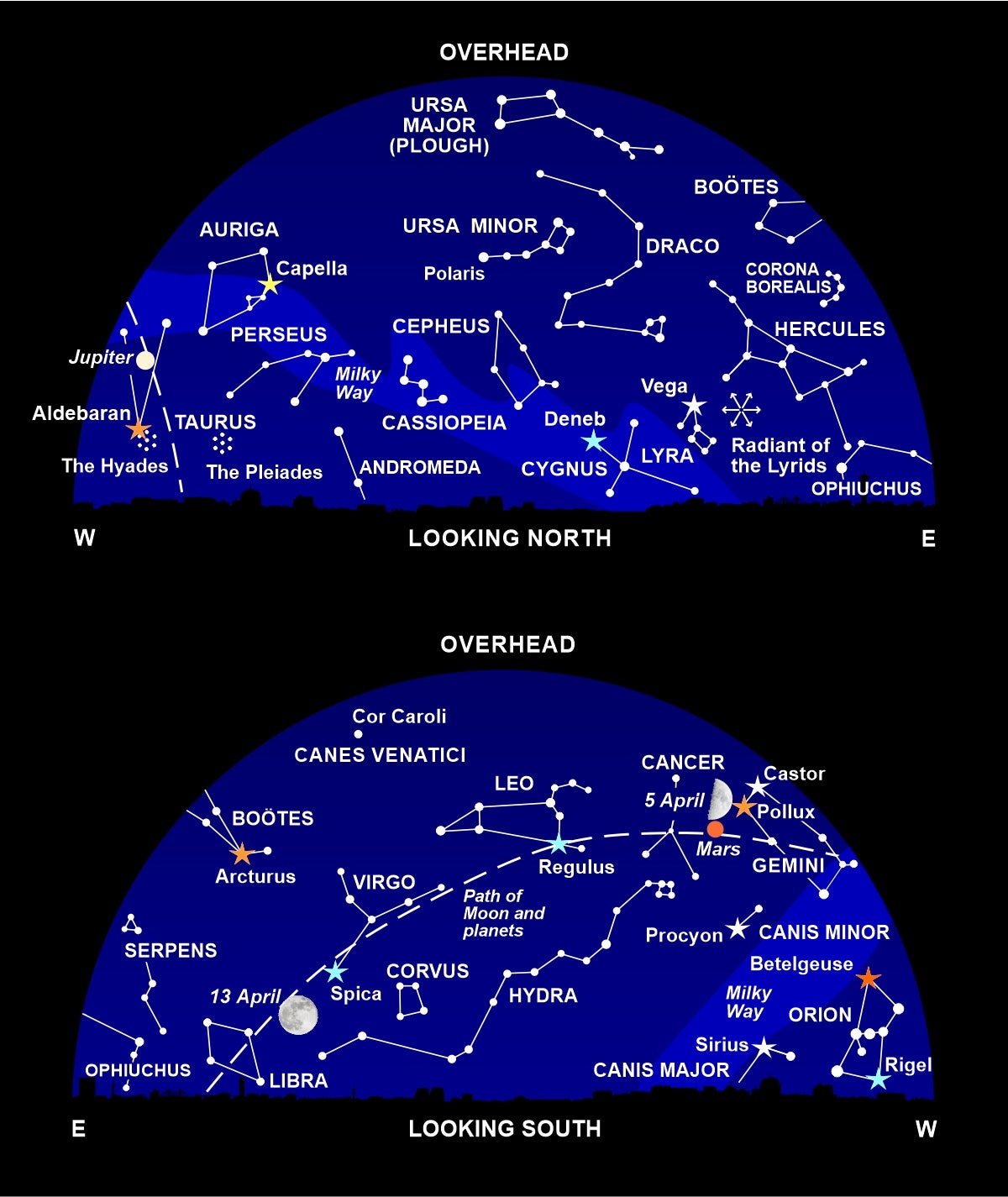Stargazing in April: Easter and the Moon
you can tell when Easter is due just by looking at the sky, Nigel Henbest writes

This spring, we’re having to wait a long time for our moveable feast of eggs and chocolate: Easter Day falls on 20 April, near the end of its possible range of dates that span 22 March to 25 April. And if you’re wondering why I’m talking about a religious festival in an astronomy column, the date of Easter is set fairly and squarely by what’s happening in the sky.
According to the Bible, Jesus was crucified at Passover. And the date of the Passover is determined by the moon, in the Jewish lunar calendar.
The first month of this calendar, Nisan, is set by the spring equinox, the day that the sun rises due east and sets due west, and day and night are equal. Passover coincides with the full moon in Nisan, which is the first full moon after the spring equinox.
According to Christians, the Last Supper eaten by Jesus and his disciples was a Passover meal, and he was crucified the next day, on Passover itself. The celebrations for Christians – Easter – come on the following Sunday, the day of the resurrection.
To sum it up briefly, we can do no better than to turn to the words of the eighth century monk, the Venerable Bede: “The Sunday following the Full Moon which falls on or after the equinox will give the lawful Easter.”
This means you can tell when Easter is due just by looking at the sky! First, wait until you see the Sun rising due east and setting due west: that’s the spring solstice, which fell on 20 March this year. Now follow the Moon until it’s Full – coming up on 13 April – and Easter will be the next Sunday, 20 April.
In other years, the formula gives very different results. If the Full Moon happens at the equinox, then Easter Sunday can come as early as 22 March, when we’re surrounded by fresh spring flowers and hopping rabbits. That happened in 1818 - but not again until 2285.
On the other hand, the first Full Moon can be almost a month after the equinox, and – if that falls on a Sunday – we have to hang around another week for Easter Day. The latest date can be 25 April, as occurred in 1943, and next will be in 2038.
What’s Up
Jupiter is glorious in the west after sunset, outshining all the stars. The crescent Moon lies near the giant planet on 30 April.

Higher up, you’ll find Mars close to the twin stars of Gemini, Castor and Pollux: the Moon is very close to the Red Planet on 5 April. As it moves leftwards in the sky, Mars lines up with Castor and Pollux on 10 April, and it moves into the neighbouring constellation of Cancer by the end of the month.
Dominating the southern sky is the feline shape of Leo, a crouching lion in mythology. To its left is Virgo (the virgin) marked by a Y-shape of stars rising upwards from bright Spica. In the northeast, brilliant Vega is low in the horizon, the leading light of the little constellation Lyra.
On the night of 22 April, watch out for shooting stars speeding outwards from this region and streaking across the sky. The Lyrid shooting stars are specks of space dust burning up in the atmosphere as we cross a trail of debris shed by Comet Thatcher – discovered by American astronomer Alfred Thatcher in 1861 – as it pursues its 420-year orbit around the Sun.
If you’re an early bird, you can’t miss brilliant Venus rising in the east around 5 am. The crescent Moon forms a lovely sight with the Morning Star before dawn on 24 and 25 April.
5 April, 3.15am: First Quarter Moon near Mars
12 April: Moon near Spica
13 April, 1.22am: Full Moon near Spica
21 April, 2.35am: Last Quarter Moon; Mercury at greatest elongation west
22 April: Venus at greatest brightness; maximum of Lyrid meteor shower
24 April, before dawn: Moon near Venus
25 April, before dawn: Moon near Venus
27 April, 8.31pm: New Moon
30 April: Moon near Jupiter
Join our commenting forum
Join thought-provoking conversations, follow other Independent readers and see their replies
Comments